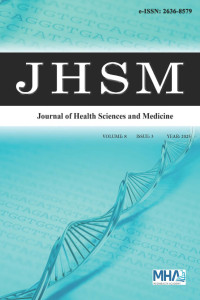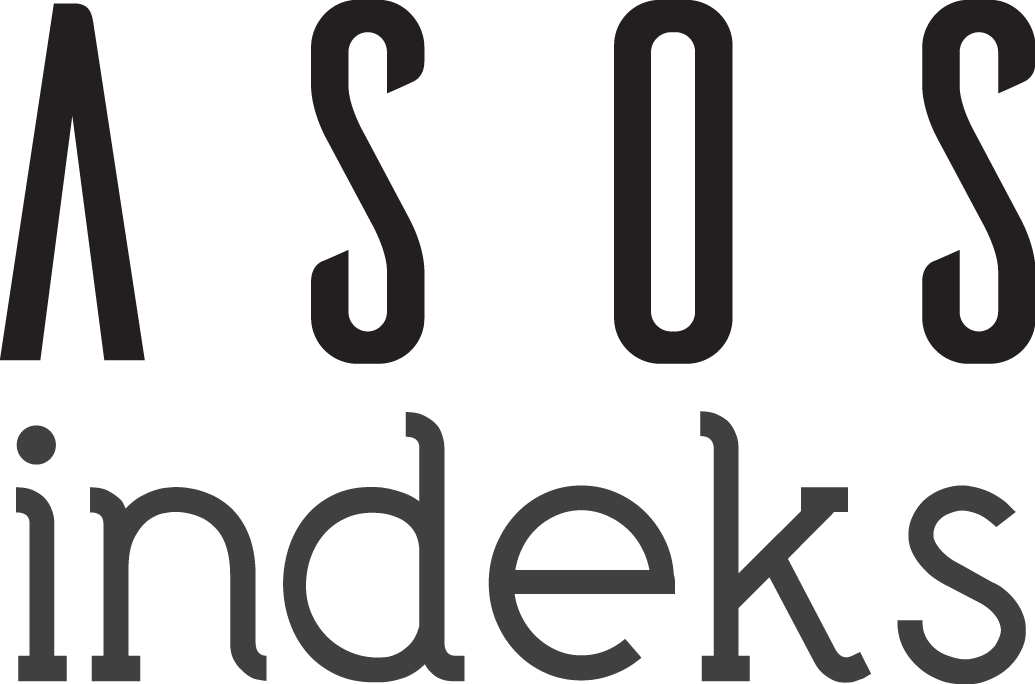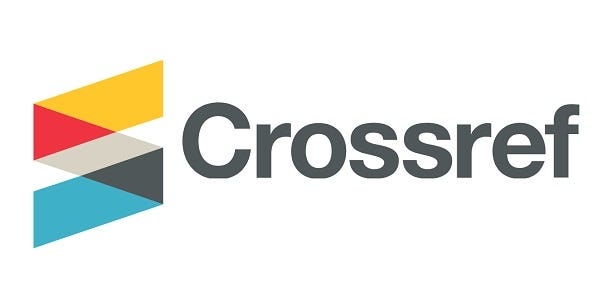A bibliometric analysis of the literature from the past to the present on the use of artificial intelligence in orthodontics and orthognathic surgery
Abstract
Aims: This study aims to investigate the publication characteristics of academic work centred around artificial intelligence (AI) in orthodontics and orthognathic surgery in detail.
Methods: In this analysis, the VOSviewer software and the Bibliometrix Biblioshiny R-package were employed for the purposes of bibliometric investigation and data visualisation.
Results: Between 1991 and 2024, 842 articles were published, averaging 12.33 citations per article. China topped the list with 200 articles, succeeded by the U.S. with 183 and South Korea with 121. Seoul National University authored the highest number of publications (47), succeeded by Peking University (36) and the University of North Carolina (34). Seoul National University (807) and the Catholic University of Leuven (567) ranked highest in citation impact. Jacobs Reinhilde was the most prolific author, with 22 publications, and alongside Dinggang Shen and Adriaan Van Gerven, had the greatest citation counts of 544, 491, and 476, respectively. The most used keywords were “artificial intelligence,” “deep learning,” “machine learning,” “orthodontics,” “convolutional neural network,” “orthognathic surgery,” “dentistry,” “cephalometry,” “CBCT,” and “cephalometric analysis.”
Conclusion: This bibliometric analysis illustrates that AI has swiftly become an expanding research subject in orthodontics and orthognathic surgery, attracting considerable interest from the scientific community. The thorough investigation indicates that AI is essential, especially in cephalometric evaluations, diagnostic procedures, and treatment strategies.
References
- Rajaraman V. JohnMcCarthy-father of artificial intelligence. Resonance. 2014;19:198-207.
- Li JO, Liu H, Ting DSJ, et al. Digital technology, tele-medicine and artificial intelligence in ophthalmology: a global perspective. Prog Retin Eye Res. 2021;82:100900. doi:10.1016/j.preteyeres.2020.100900
- Mohammad-Rahimi H, Sohrabniya F, Ourang SA, et al. Artificial intelligence in endodontics: data preparation, clinical applications, ethical considerations, limitations, and future directions. Int Endod J. 2024;57(11):1566-1595. doi:10.1111/iej.14128
- O’Leary DE. Artificial intelligence and big data. IEEE Intell Syst. 2013; 28:96-99.
- Abesi F, Jamali AS, Zamani M. Accuracy of artificial intelligence in the detection and segmentation of oral and maxillofacial structures using cone-beam computed tomography images: a systematic review and meta-analysis. Pol J Radiol. 2023;88:e256-e263. doi:10.5114/pjr.2023. 127624
- Wong KF, Lam XY, Jiang Y, Yeung AWK, Lin Y. Artificial intelligence in orthodontics and orthognathic surgery: a bibliometric analysis of the 100 most-cited articles. Head Face Med. 2023;19(1):38. doi:10.1186/s13005-023-00383-0
- Yamashiro T, Ko CC. Artificial intelligence and machine learning in orthodontics. Orthod Craniofac Res. 2021;24(Suppl 2):3-5. doi:10.1111/ocr.12543
- Khanagar SB, Al-Ehaideb A, Vishwanathaiah S, et al. Scope and performance of artificial intelligence technology in orthodontic diagnosis, treatment planning, and clinical decision-making-a systematic review. J Dent Sci. 2021;16(1):482-492. doi:10.1016/j.jds.2020. 05.022
- Bouletreau P, Makaremi M, Ibrahim B, Louvrier A, Sigaux N. Artificial intelligence: applications in orthognathic surgery. J Stomatol Oral Maxillofac Surg. 2019;120(4):347-354. doi:10.1016/j.jormas.2019.06.001
- Stehrer R, Hingsammer L, Staudigl C, et al. Machine learning based prediction of perioperative blood loss in orthognathic surgery. J Craniomaxillofac Surg. 2019;47(11):1676-1681. doi:10.1016/j.jcms.2019. 08.005
- Chung M, Lee J, Song W, et al. Automatic registration between dental cone-beam CT and scanned surface via deep pose regression neural networks and clustered similarities. IEEE Trans Med Imaging. 2020; 39(12):3900-3909. doi:10.1109/TMI.2020.3007520
- Bajjad AA, Gupta S, Agarwal S, Pawar RA, Kothawade MU, Singh G. Use of artificial intelligence in determination of bone age of the healthy individuals: a scoping review. J World Fed Orthod. 2024;13(2):95-102. doi:10.1016/j.ejwf.2023.10.001
- Raza A, Munir K, Almutairi MS, Sehar R. Novel transfer learning-based deep features for diagnosis of Down syndrome in children using facial images. IEEE Access. 2024.
- Thompson DF, Walker CK. A descriptive and historical review of bibliometrics with applications to medical sciences. Pharmacotherapy. 2015;35(6):551-559. doi:10.1002/phar.1586
- Hamadallah HH, Alturki KN, Alsulaimani M, Othman A, Altamimi AO. Cleft lip and palate research trends in Saudi Arabia: a bibliometric analysis. Cureus. 2024;16(1):e52085. doi:10.7759/cureus.52085
- Tarazona-Alvarez B, Lucas-Dominguez R, Paredes-Gallardo V, Alonso-Arroyo A, Vidal-Infer A. A bibliometric analysis of scientific production in the field of lingual orthodontics. Head Face Med. 2019;15(1):23. doi: 10.1186/s13005-019-0207-7
- Ferrillo M, Nucci L, Gallo V, et al. Temporary anchorage devices in orthodontics: a bibliometric analysis of the 50 most-cited articles from 2012 to 2022. Angle Orthod. 2023;93(5):591-602. doi:10.2319/010923-18.1
- He X, Huang Z, Yang Y, et al. A bibliometric analysis of clear aligner treatment (CAT) from 2003 to 2023. Cureus. 2024;16(6):e63348. doi:10. 7759/cureus.63348
- Lam XY, Ren J, Yeung AWK, Lin Y. The 100 most-cited randomised controlled trials in orthodontics: a bibliometric study. Int Dent J. 2024; 74(4):868-875. doi:10.1016/j.identj.2023.12.010
- van Eck NJ, Waltman L. Software survey: VOSviewer, a computer program for bibliometric mapping. Scientometrics. 2010;84(2):523-538. doi:10.1007/s11192-009-0146-3
- Aria M, Cuccurullo C. Bibliometrix: an R-tool for comprehensive science mapping analysis. J Informetr. 2017;11:959-975.
- Monill-González A, Rovira-Calatayud L, d’Oliveira NG, Ustrell-Torrent JM. Artificial intelligence in orthodontics: where are we now? A scoping review. Orthod Craniofac Res. 2021;24(Suppl 2):6-15. doi:10.1111/ocr. 12517
- Bichu YM, Hansa I, Bichu AY, Premjani P, Flores-Mir C, Vaid NR. Applications of artificial intelligence and machine learning in orthodontics: a scoping review. Prog Orthod. 2021;22(1):18. doi:10.1186/s40510-021-00361-9
- Liu J, Zhang C, Shan Z. Application of artificial intelligence in orthodontics: current state and future perspectives. Healthcare (Basel). 2023;11(20):2760. doi:10.3390/healthcare11202760
- Khanagar SB, Alfouzan K, Awawdeh M, Alkadi L, Albalawi F, Alghilan MA. Performance of artificial intelligence models designed for diagnosis, treatment planning, and predicting prognosis of orthognathic surgery (OGS): a scoping review. Appl Sci. 2022;12:5581.
- Snider V, Homsi K, Kusnoto B, et al. Clinical evaluation of artificial intelligence driven remote monitoring technology for assessment of patient oral hygiene during orthodontic treatment. Am J Orthod Dentofacial Orthop. 2024;165(5):586-592. doi:10.1016/j.ajodo.2023.12. 008
- Topol EJ. High-performance medicine: the convergence of human and artificial intelligence. Nat Med. 2019;25(1):44-56. doi:10.1038/s41591-018-0300-7
- Shan T, Tay FR, Gu L. Application of artificial intelligence in dentistry. J Dent Res. 2021;100(3):232-244. doi:10.1177/0022034520969115
- Litjens G, Kooi T, Bejnordi BE, et al. A survey on deep learning in medical image analysis. Med Image Anal. 2017;42:60-88. doi:10.1016/j.media.2017.07.005
- Ching T, Himmelstein DS, Beaulieu-Jones BK, et al. Opportunities and obstacles for deep learning in biology and medicine. J R Soc Interface. 2018;15(141):20170387. doi:10.1098/rsif.2017.0387
- Knox J. Artificial intelligence and education in China. Learn Media Technol. 2020;45:298-311.
- Spampinato C, Palazzo S, Giordano D, Aldinucci M, Leonardi R. Deep learning for automated skeletal bone age assessment in X-Ray images. Med Image Anal. 2017;36:41-51. doi:10.1016/j.media.2016.10.010
- Schwendicke F, Golla T, Dreher M, Krois J. Convolutional neural networks for dental image diagnostics: a scoping review. J Dent. 2019;91: 103226. doi:10.1016/j.jdent.2019.103226
- Payer C, Štern D, Bischof H, Urschler M. Integrating spatial configuration into heatmap regression based CNNs for landmark localization. Med Image Anal. 2019;54:207-219. doi:10.1016/j.media.2019.03.007
- Khanagar SB, Al-Ehaideb A, Maganur PC, et al. Developments, application, and performance of artificial intelligence in dentistry-a systematic review. J Dent Sci. 2021;16(1):508-522. doi:10.1016/j.jds.2020. 06.019
- Arık SÖ, Ibragimov B, Xing L. Fully automated quantitative cephalometry using convolutional neural networks. J Med Imaging (Bellingham). 2017;4(1):014501. doi:10.1117/1.JMI.4.1.014501
- Hung K, Montalvao C, Tanaka R, Kawai T, Bornstein MM. The use and performance of artificial intelligence applications in dental and maxillofacial radiology: a systematic review. Dentomaxillofac Radiol. 2020;49(1):20190107. doi:10.1259/dmfr.20190107
- Fourcade A, Khonsari RH. Deep learning in medical image analysis: a third eye for doctors. J Stomatol Oral Maxillofac Surg. 2019;120(4):279-288. doi:10.1016/j.jormas.2019.06.002
- Park JH, Hwang HW, Moon JH, et al. Automated identification of cephalometric landmarks: part 1-comparisons between the latest deep-learning methods YOLOV3 and SSD. Angle Orthod. 2019;89(6):903-909. doi:10.2319/022019-127.1
- Hwang HW, Park JH, Moon JH, et al. Automated identification of cephalometric landmarks: part 2-might it be better than human? Angle Orthod. 2020;90(1):69-76. doi:10.2319/022019-129.1
- Kunz F, Stellzig-Eisenhauer A, Zeman F, Boldt J. Artificial intelligence in orthodontics : Evaluation of a fully automated cephalometric analysis using a customized convolutional neural network. J Orofac Orthop. 2020;81(1):52-68. doi:10.1007/s00056-019-00203-8
- Xu X, Liu C, Zheng Y. 3D tooth segmentation and labeling using deep convolutional neural networks. IEEE Trans Vis Comput Graph. 2019; 25(7):2336-2348. doi:10.1109/TVCG.2018.2839685
- Xie X, Wang L, Wang A. Artificial neural network modeling for deciding if extractions are necessary prior to orthodontic treatment. Angle Orthod. 2010;80(2):262-266. doi:10.2319/111608-588.1
- Yu HJ, Cho SR, Kim MJ, Kim WH, Kim JW, Choi J. automated skeletal classification with lateral cephalometry based on artificial intelligence. J Dent Res. 2020;99(3):249-256. doi:10.1177/0022034520901715
- Cui Z, Fang Y, Mei L, et al. A fully automatic AI system for tooth and alveolar bone segmentation from cone-beam CT images. Nat Commun. 2022;13(1):2096. doi:10.1038/s41467-022-29637-2
- Lee JH, Yu HJ, Kim MJ, Kim JW, Choi J. Automated cephalometric landmark detection with confidence regions using Bayesian convolutional neural networks. BMC Oral Health. 2020;20(1):270. doi: 10.1186/s12903-020-01256-7
- Torosdagli N, Liberton DK, Verma P, Sincan M, Lee JS, Bagci U. Deep geodesic learning for segmentation and anatomical landmarking. IEEE Trans Med Imaging. 2019;38(4):919-931. doi:10.1109/TMI.2018.2875814
- Patcas R, Bernini DAJ, Volokitin A, Agustsson E, Rothe R, Timofte R. Applying artificial intelligence to assess the impact of orthognathic treatment on facial attractiveness and estimated age. Int J Oral Maxillofac Surg. 2019;48(1):77-83. doi:10.1016/j.ijom.2018.07.010
- Thurzo A, Strunga M, Urban R, Surovkova J, Afrashtehfar KI. Impact of artificial intelligence on dental education: a review and guide for curriculum update. Edu Sci. 2023;13(2):150. doi:10.3390/educsci13020 150
- Murata S, Lee C, Tanikawa C, Date S. Towards a fully automated diagnostic system for orthodontic treatment in dentistry. 2017 IEEE 13th Int Conf E-Sci (E-Science). 2017. doi:10.1109/eScience.2017.12
- Dallora AL, Anderberg P, Kvist O, Mendes E, Diaz Ruiz S, Sanmartin Berglund J. Bone age assessment with various machine learning techniques: a systematic literature review and meta-analysis. PLoS One. 2019;14(7):e0220242. doi:10.1371/journal.pone.0220242
- Lian C, Wang L, Wu TH, et al. Deep multi-scale mesh feature learning for automated labeling of raw dental surfaces from 3D intraoral scanners. IEEE Trans Med Imaging. 2020;39(7):2440-2450. doi:10.1109/TMI.2020.2971730
- Kök H, Acilar AM, İzgi MS. Usage and comparison of artificial intelligence algorithms for determination of growth and development by cervical vertebrae stages in orthodontics. Prog Orthod. 2019;20(1):41. doi:10.1186/s40510-019-0295-8
- Tian SK, Dai N, Bei Z, et al. Automatic classification and segmentation of teeth on 3D dental model using hierarchical deep learning networks. IEEE Access. 2019;7(1):84817-84828. doi:10.1109/ACCESS.2019.2924262
- Li P, Kong D, Tang T, et al. Orthodontic treatment planning based on artificial neural networks. Sci Rep. 2019;9(1):2037. doi:10.1038/s41598-018-38439-w
- Cui Z, Li C, Chen N, et al. TSegNet: An efficient and accurate tooth segmentation network on 3D dental model. Med Image Anal. 2021;69: 101949. doi:10.1016/j.media.2020.101949
Ortodonti ve ortognatik cerrahide yapay zekanın kullanımına dair geçmişten günümüze literatürün bibliyometrik analizi
Abstract
Amaç: Bu çalışma, ortodonti ve ortognatik cerrahi alanında yapay zeka temelli akademik çalışmaların yayın özelliklerini ayrıntılı olarak incelemeyi amaçlamaktadır.
Yöntemler: Bibliyometrik analiz ve veri görselleştirme amacıyla VOSviewer yazılımı ve Bibliometrix Biblioshiny R paketi kullanılmıştır.
Bulgular: 1991 ile 2024 yılları arasında toplam 842 makale yayımlanmış olup, makale başına ortalama atıf sayısı 12,33’tür. Çin 200 makale ile en fazla yayın yapan ülke olurken, onu 183 makale ile ABD ve 121 makale ile Güney Kore takip etmiştir. En fazla yayına sahip kurumlar 47 makale ile Seul Ulusal Üniversitesi, 36 makale ile Pekin Üniversitesi ve 34 makale ile Kuzey Karolina Üniversitesi olmuştur. Seul Ulusal Üniversitesi (807 atıf) ve Katolik Leuven Üniversitesi (567 atıf) en yüksek atıf etkisine sahip kurumlardır. Jacobs Reinhilde, 22 yayınla en üretken yazar olurken, Dinggang Shen ve Adriaan Van Gerven ile birlikte en yüksek atıf alan araştırmacılar arasında yer almış ve sırasıyla 544, 491 ve 476 atıf almışlardır. En sık kullanılan anahtar kelimeler "yapay zeka", "derin öğrenme", "makine öğrenimi", "ortodonti", "evrişimli sinir ağı", "ortognatik cerrahi", "diş hekimliği", "sefalometri", "cbct" ve "sefalometrik analiz" olmuştur.
Sonuç: Bu bibliyometrik analiz, yapay zekanın ortodonti ve ortognatik cerrahi alanında hızla genişleyen bir araştırma konusu haline geldiğini ve bilim dünyasında büyük ilgi gördüğünü ortaya koymaktadır. Yapılan detaylı inceleme, yapay zekanın özellikle sefalometrik değerlendirmeler, tanısal süreçler ve tedavi stratejileri açısından kritik bir role sahip olduğunu göstermektedir.
References
- Rajaraman V. JohnMcCarthy-father of artificial intelligence. Resonance. 2014;19:198-207.
- Li JO, Liu H, Ting DSJ, et al. Digital technology, tele-medicine and artificial intelligence in ophthalmology: a global perspective. Prog Retin Eye Res. 2021;82:100900. doi:10.1016/j.preteyeres.2020.100900
- Mohammad-Rahimi H, Sohrabniya F, Ourang SA, et al. Artificial intelligence in endodontics: data preparation, clinical applications, ethical considerations, limitations, and future directions. Int Endod J. 2024;57(11):1566-1595. doi:10.1111/iej.14128
- O’Leary DE. Artificial intelligence and big data. IEEE Intell Syst. 2013; 28:96-99.
- Abesi F, Jamali AS, Zamani M. Accuracy of artificial intelligence in the detection and segmentation of oral and maxillofacial structures using cone-beam computed tomography images: a systematic review and meta-analysis. Pol J Radiol. 2023;88:e256-e263. doi:10.5114/pjr.2023. 127624
- Wong KF, Lam XY, Jiang Y, Yeung AWK, Lin Y. Artificial intelligence in orthodontics and orthognathic surgery: a bibliometric analysis of the 100 most-cited articles. Head Face Med. 2023;19(1):38. doi:10.1186/s13005-023-00383-0
- Yamashiro T, Ko CC. Artificial intelligence and machine learning in orthodontics. Orthod Craniofac Res. 2021;24(Suppl 2):3-5. doi:10.1111/ocr.12543
- Khanagar SB, Al-Ehaideb A, Vishwanathaiah S, et al. Scope and performance of artificial intelligence technology in orthodontic diagnosis, treatment planning, and clinical decision-making-a systematic review. J Dent Sci. 2021;16(1):482-492. doi:10.1016/j.jds.2020. 05.022
- Bouletreau P, Makaremi M, Ibrahim B, Louvrier A, Sigaux N. Artificial intelligence: applications in orthognathic surgery. J Stomatol Oral Maxillofac Surg. 2019;120(4):347-354. doi:10.1016/j.jormas.2019.06.001
- Stehrer R, Hingsammer L, Staudigl C, et al. Machine learning based prediction of perioperative blood loss in orthognathic surgery. J Craniomaxillofac Surg. 2019;47(11):1676-1681. doi:10.1016/j.jcms.2019. 08.005
- Chung M, Lee J, Song W, et al. Automatic registration between dental cone-beam CT and scanned surface via deep pose regression neural networks and clustered similarities. IEEE Trans Med Imaging. 2020; 39(12):3900-3909. doi:10.1109/TMI.2020.3007520
- Bajjad AA, Gupta S, Agarwal S, Pawar RA, Kothawade MU, Singh G. Use of artificial intelligence in determination of bone age of the healthy individuals: a scoping review. J World Fed Orthod. 2024;13(2):95-102. doi:10.1016/j.ejwf.2023.10.001
- Raza A, Munir K, Almutairi MS, Sehar R. Novel transfer learning-based deep features for diagnosis of Down syndrome in children using facial images. IEEE Access. 2024.
- Thompson DF, Walker CK. A descriptive and historical review of bibliometrics with applications to medical sciences. Pharmacotherapy. 2015;35(6):551-559. doi:10.1002/phar.1586
- Hamadallah HH, Alturki KN, Alsulaimani M, Othman A, Altamimi AO. Cleft lip and palate research trends in Saudi Arabia: a bibliometric analysis. Cureus. 2024;16(1):e52085. doi:10.7759/cureus.52085
- Tarazona-Alvarez B, Lucas-Dominguez R, Paredes-Gallardo V, Alonso-Arroyo A, Vidal-Infer A. A bibliometric analysis of scientific production in the field of lingual orthodontics. Head Face Med. 2019;15(1):23. doi: 10.1186/s13005-019-0207-7
- Ferrillo M, Nucci L, Gallo V, et al. Temporary anchorage devices in orthodontics: a bibliometric analysis of the 50 most-cited articles from 2012 to 2022. Angle Orthod. 2023;93(5):591-602. doi:10.2319/010923-18.1
- He X, Huang Z, Yang Y, et al. A bibliometric analysis of clear aligner treatment (CAT) from 2003 to 2023. Cureus. 2024;16(6):e63348. doi:10. 7759/cureus.63348
- Lam XY, Ren J, Yeung AWK, Lin Y. The 100 most-cited randomised controlled trials in orthodontics: a bibliometric study. Int Dent J. 2024; 74(4):868-875. doi:10.1016/j.identj.2023.12.010
- van Eck NJ, Waltman L. Software survey: VOSviewer, a computer program for bibliometric mapping. Scientometrics. 2010;84(2):523-538. doi:10.1007/s11192-009-0146-3
- Aria M, Cuccurullo C. Bibliometrix: an R-tool for comprehensive science mapping analysis. J Informetr. 2017;11:959-975.
- Monill-González A, Rovira-Calatayud L, d’Oliveira NG, Ustrell-Torrent JM. Artificial intelligence in orthodontics: where are we now? A scoping review. Orthod Craniofac Res. 2021;24(Suppl 2):6-15. doi:10.1111/ocr. 12517
- Bichu YM, Hansa I, Bichu AY, Premjani P, Flores-Mir C, Vaid NR. Applications of artificial intelligence and machine learning in orthodontics: a scoping review. Prog Orthod. 2021;22(1):18. doi:10.1186/s40510-021-00361-9
- Liu J, Zhang C, Shan Z. Application of artificial intelligence in orthodontics: current state and future perspectives. Healthcare (Basel). 2023;11(20):2760. doi:10.3390/healthcare11202760
- Khanagar SB, Alfouzan K, Awawdeh M, Alkadi L, Albalawi F, Alghilan MA. Performance of artificial intelligence models designed for diagnosis, treatment planning, and predicting prognosis of orthognathic surgery (OGS): a scoping review. Appl Sci. 2022;12:5581.
- Snider V, Homsi K, Kusnoto B, et al. Clinical evaluation of artificial intelligence driven remote monitoring technology for assessment of patient oral hygiene during orthodontic treatment. Am J Orthod Dentofacial Orthop. 2024;165(5):586-592. doi:10.1016/j.ajodo.2023.12. 008
- Topol EJ. High-performance medicine: the convergence of human and artificial intelligence. Nat Med. 2019;25(1):44-56. doi:10.1038/s41591-018-0300-7
- Shan T, Tay FR, Gu L. Application of artificial intelligence in dentistry. J Dent Res. 2021;100(3):232-244. doi:10.1177/0022034520969115
- Litjens G, Kooi T, Bejnordi BE, et al. A survey on deep learning in medical image analysis. Med Image Anal. 2017;42:60-88. doi:10.1016/j.media.2017.07.005
- Ching T, Himmelstein DS, Beaulieu-Jones BK, et al. Opportunities and obstacles for deep learning in biology and medicine. J R Soc Interface. 2018;15(141):20170387. doi:10.1098/rsif.2017.0387
- Knox J. Artificial intelligence and education in China. Learn Media Technol. 2020;45:298-311.
- Spampinato C, Palazzo S, Giordano D, Aldinucci M, Leonardi R. Deep learning for automated skeletal bone age assessment in X-Ray images. Med Image Anal. 2017;36:41-51. doi:10.1016/j.media.2016.10.010
- Schwendicke F, Golla T, Dreher M, Krois J. Convolutional neural networks for dental image diagnostics: a scoping review. J Dent. 2019;91: 103226. doi:10.1016/j.jdent.2019.103226
- Payer C, Štern D, Bischof H, Urschler M. Integrating spatial configuration into heatmap regression based CNNs for landmark localization. Med Image Anal. 2019;54:207-219. doi:10.1016/j.media.2019.03.007
- Khanagar SB, Al-Ehaideb A, Maganur PC, et al. Developments, application, and performance of artificial intelligence in dentistry-a systematic review. J Dent Sci. 2021;16(1):508-522. doi:10.1016/j.jds.2020. 06.019
- Arık SÖ, Ibragimov B, Xing L. Fully automated quantitative cephalometry using convolutional neural networks. J Med Imaging (Bellingham). 2017;4(1):014501. doi:10.1117/1.JMI.4.1.014501
- Hung K, Montalvao C, Tanaka R, Kawai T, Bornstein MM. The use and performance of artificial intelligence applications in dental and maxillofacial radiology: a systematic review. Dentomaxillofac Radiol. 2020;49(1):20190107. doi:10.1259/dmfr.20190107
- Fourcade A, Khonsari RH. Deep learning in medical image analysis: a third eye for doctors. J Stomatol Oral Maxillofac Surg. 2019;120(4):279-288. doi:10.1016/j.jormas.2019.06.002
- Park JH, Hwang HW, Moon JH, et al. Automated identification of cephalometric landmarks: part 1-comparisons between the latest deep-learning methods YOLOV3 and SSD. Angle Orthod. 2019;89(6):903-909. doi:10.2319/022019-127.1
- Hwang HW, Park JH, Moon JH, et al. Automated identification of cephalometric landmarks: part 2-might it be better than human? Angle Orthod. 2020;90(1):69-76. doi:10.2319/022019-129.1
- Kunz F, Stellzig-Eisenhauer A, Zeman F, Boldt J. Artificial intelligence in orthodontics : Evaluation of a fully automated cephalometric analysis using a customized convolutional neural network. J Orofac Orthop. 2020;81(1):52-68. doi:10.1007/s00056-019-00203-8
- Xu X, Liu C, Zheng Y. 3D tooth segmentation and labeling using deep convolutional neural networks. IEEE Trans Vis Comput Graph. 2019; 25(7):2336-2348. doi:10.1109/TVCG.2018.2839685
- Xie X, Wang L, Wang A. Artificial neural network modeling for deciding if extractions are necessary prior to orthodontic treatment. Angle Orthod. 2010;80(2):262-266. doi:10.2319/111608-588.1
- Yu HJ, Cho SR, Kim MJ, Kim WH, Kim JW, Choi J. automated skeletal classification with lateral cephalometry based on artificial intelligence. J Dent Res. 2020;99(3):249-256. doi:10.1177/0022034520901715
- Cui Z, Fang Y, Mei L, et al. A fully automatic AI system for tooth and alveolar bone segmentation from cone-beam CT images. Nat Commun. 2022;13(1):2096. doi:10.1038/s41467-022-29637-2
- Lee JH, Yu HJ, Kim MJ, Kim JW, Choi J. Automated cephalometric landmark detection with confidence regions using Bayesian convolutional neural networks. BMC Oral Health. 2020;20(1):270. doi: 10.1186/s12903-020-01256-7
- Torosdagli N, Liberton DK, Verma P, Sincan M, Lee JS, Bagci U. Deep geodesic learning for segmentation and anatomical landmarking. IEEE Trans Med Imaging. 2019;38(4):919-931. doi:10.1109/TMI.2018.2875814
- Patcas R, Bernini DAJ, Volokitin A, Agustsson E, Rothe R, Timofte R. Applying artificial intelligence to assess the impact of orthognathic treatment on facial attractiveness and estimated age. Int J Oral Maxillofac Surg. 2019;48(1):77-83. doi:10.1016/j.ijom.2018.07.010
- Thurzo A, Strunga M, Urban R, Surovkova J, Afrashtehfar KI. Impact of artificial intelligence on dental education: a review and guide for curriculum update. Edu Sci. 2023;13(2):150. doi:10.3390/educsci13020 150
- Murata S, Lee C, Tanikawa C, Date S. Towards a fully automated diagnostic system for orthodontic treatment in dentistry. 2017 IEEE 13th Int Conf E-Sci (E-Science). 2017. doi:10.1109/eScience.2017.12
- Dallora AL, Anderberg P, Kvist O, Mendes E, Diaz Ruiz S, Sanmartin Berglund J. Bone age assessment with various machine learning techniques: a systematic literature review and meta-analysis. PLoS One. 2019;14(7):e0220242. doi:10.1371/journal.pone.0220242
- Lian C, Wang L, Wu TH, et al. Deep multi-scale mesh feature learning for automated labeling of raw dental surfaces from 3D intraoral scanners. IEEE Trans Med Imaging. 2020;39(7):2440-2450. doi:10.1109/TMI.2020.2971730
- Kök H, Acilar AM, İzgi MS. Usage and comparison of artificial intelligence algorithms for determination of growth and development by cervical vertebrae stages in orthodontics. Prog Orthod. 2019;20(1):41. doi:10.1186/s40510-019-0295-8
- Tian SK, Dai N, Bei Z, et al. Automatic classification and segmentation of teeth on 3D dental model using hierarchical deep learning networks. IEEE Access. 2019;7(1):84817-84828. doi:10.1109/ACCESS.2019.2924262
- Li P, Kong D, Tang T, et al. Orthodontic treatment planning based on artificial neural networks. Sci Rep. 2019;9(1):2037. doi:10.1038/s41598-018-38439-w
- Cui Z, Li C, Chen N, et al. TSegNet: An efficient and accurate tooth segmentation network on 3D dental model. Med Image Anal. 2021;69: 101949. doi:10.1016/j.media.2020.101949
Details
| Primary Language | English |
|---|---|
| Subjects | Oral and Maxillofacial Surgery, Orthodontics and Dentofacial Orthopaedics |
| Journal Section | Original Article |
| Authors | |
| Publication Date | May 30, 2025 |
| Submission Date | March 3, 2025 |
| Acceptance Date | April 12, 2025 |
| Published in Issue | Year 2025 Volume: 8 Issue: 3 |
Interuniversity Board (UAK) Equivalency: Article published in Ulakbim TR Index journal [10 POINTS], and Article published in other (excuding 1a, b, c) international indexed journal (1d) [5 POINTS].
The Directories (indexes) and Platforms we are included in are at the bottom of the page.
Note: Our journal is not WOS indexed and therefore is not classified as Q.
You can download Council of Higher Education (CoHG) [Yüksek Öğretim Kurumu (YÖK)] Criteria) decisions about predatory/questionable journals and the author's clarification text and journal charge policy from your browser. https://dergipark.org.tr/tr/journal/2316/file/4905/show
The indexes of the journal are ULAKBİM TR Dizin, Index Copernicus, ICI World of Journals, DOAJ, Directory of Research Journals Indexing (DRJI), General Impact Factor, ASOS Index, WorldCat (OCLC), MIAR, EuroPub, OpenAIRE, Türkiye Citation Index, Türk Medline Index, InfoBase Index, Scilit, etc.
The platforms of the journal are Google Scholar, CrossRef (DOI), ResearchBib, Open Access, COPE, ICMJE, NCBI, ORCID, Creative Commons, etc.
| ||
|
Our Journal using the DergiPark system indexed are;
Ulakbim TR Dizin, Index Copernicus, ICI World of Journals, Directory of Research Journals Indexing (DRJI), General Impact Factor, ASOS Index, OpenAIRE, MIAR, EuroPub, WorldCat (OCLC), DOAJ, Türkiye Citation Index, Türk Medline Index, InfoBase Index
Our Journal using the DergiPark system platforms are;
Journal articles are evaluated as "Double-Blind Peer Review".
Our journal has adopted the Open Access Policy and articles in JHSM are Open Access and fully comply with Open Access instructions. All articles in the system can be accessed and read without a journal user. https//dergipark.org.tr/tr/pub/jhsm/page/9535
Journal charge policy https://dergipark.org.tr/tr/pub/jhsm/page/10912
Our journal has been indexed in DOAJ as of May 18, 2020.
Our journal has been indexed in TR-Dizin as of March 12, 2021.
Articles published in the Journal of Health Sciences and Medicine have open access and are licensed under the Creative Commons CC BY-NC-ND 4.0 International License.















